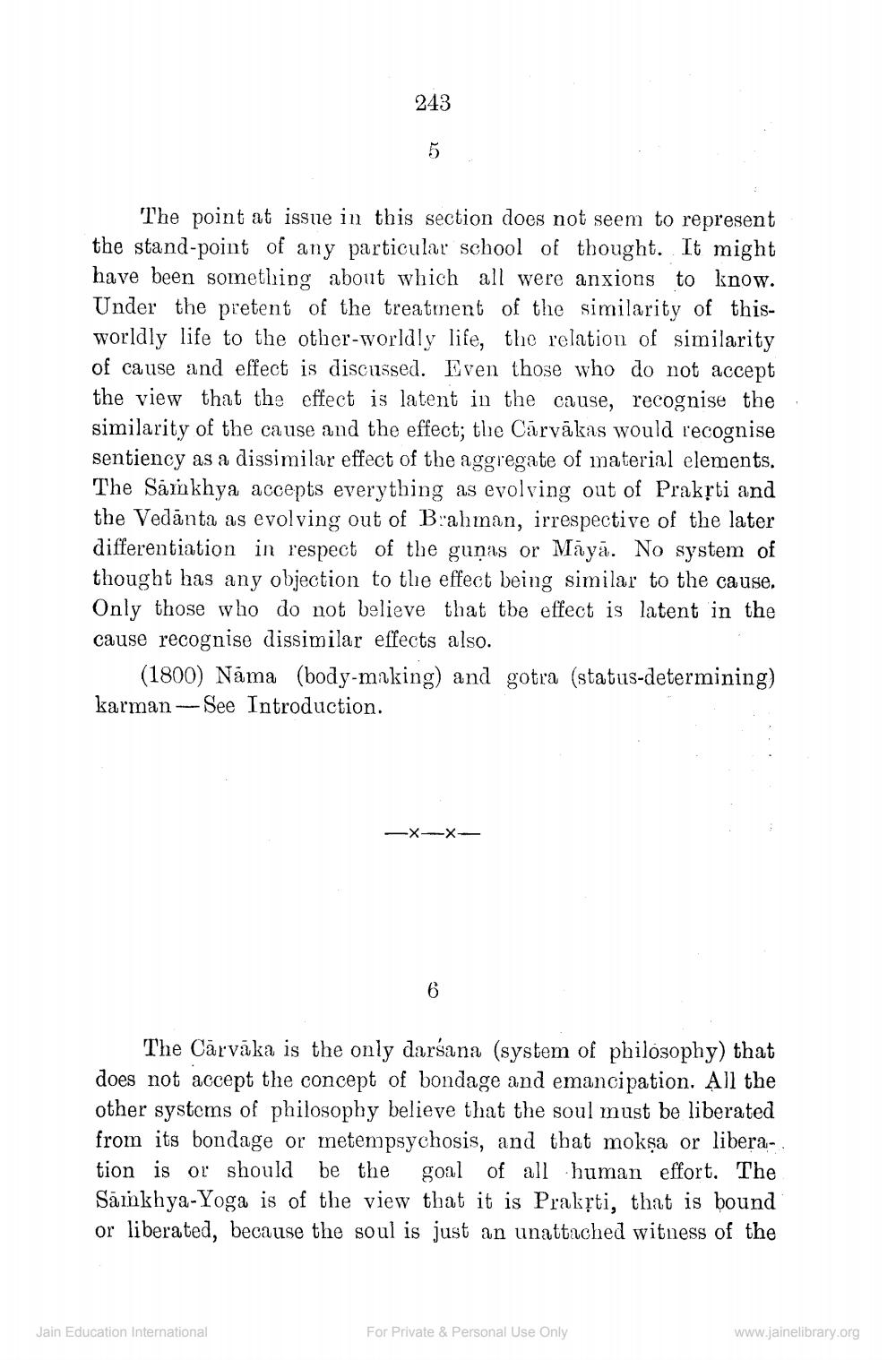________________
243
The point at issue in this section does not seem to represent the stand-point of any particular school of thought. It might have been something about which all were anxions to know. Under the pretent of the treatment of the similarity of thi worldly life to the other-worldly life, the relation of similarity of cause and effect is discussed. Even those who do not accept the view that the effect is latent in the cause, recognise the similarity of the cause and the effect; the Cārvākas would recognise sentiency as a dissimilar effect of the aggregate of material elements. The Samkhya accepts everything as evolving out of Prakřti and the Vedānta as evolving out of Brahman, irrespective of the later differentiation in respect of the guņas or Māyā. No system of thought has any objection to the effect being similar to the cause. Only those who do not believe that the effect is latent in the cause recognise dissimilar effects also.
(1800) Nama (body-making) and gotra (status-determining) karman-See Introduction.
-X-X
The Cārvāka is the only darśana (system of philosophy) that does not accept the concept of bondage and emancipation. All the other systems of philosophy believe that the soul must be liberated from its bondage or metempsychosis, and that mokṣa or liberation is or should be the goal of all human effort. The Sāinkhya-Yoga is of the view that it is Prakrti, that is bound or liberated, because the soul is just an unattached witness of the
Jain Education International
For Private & Personal Use Only
www.jainelibrary.org




